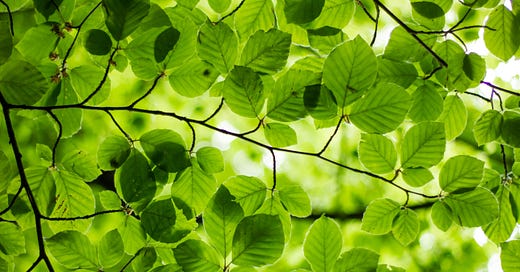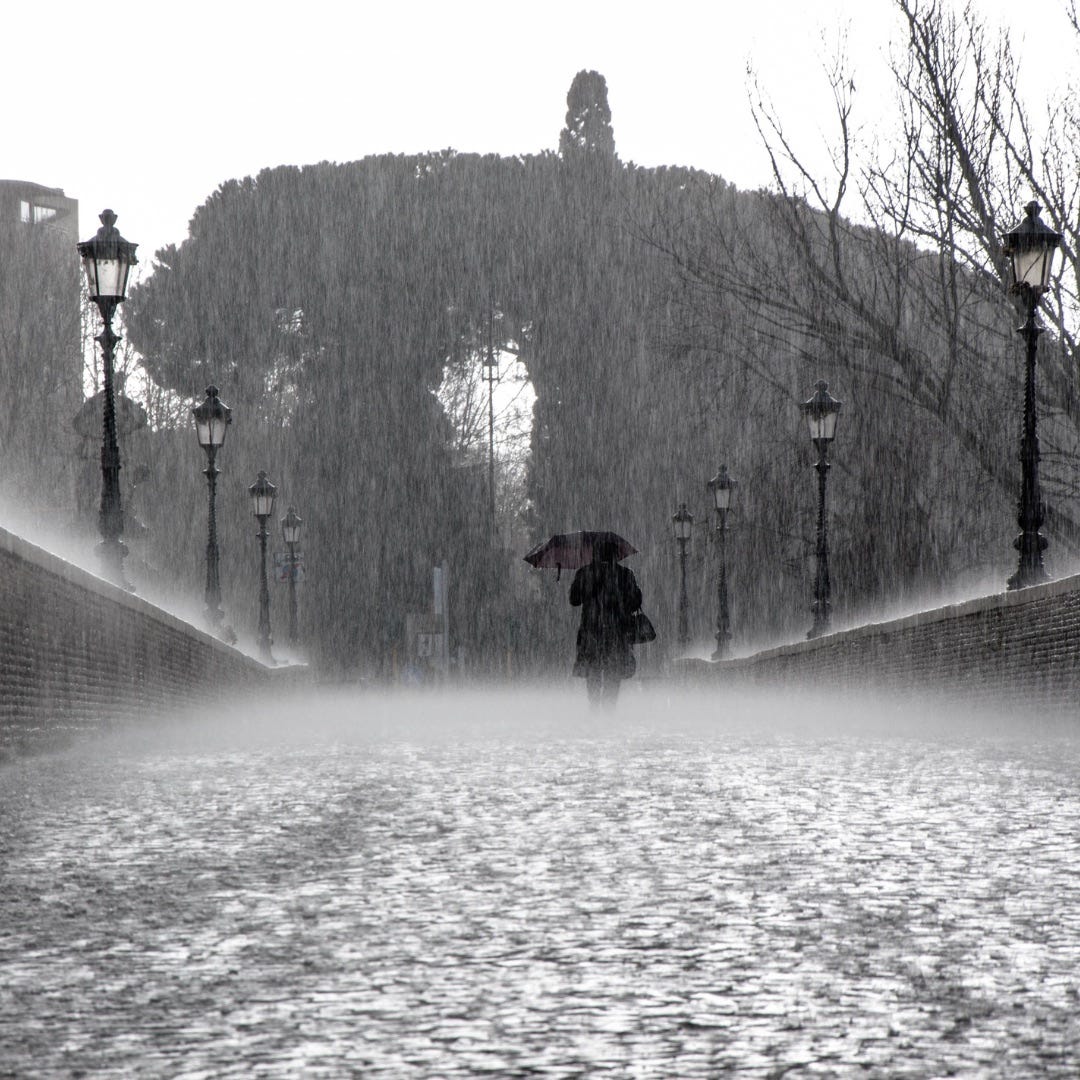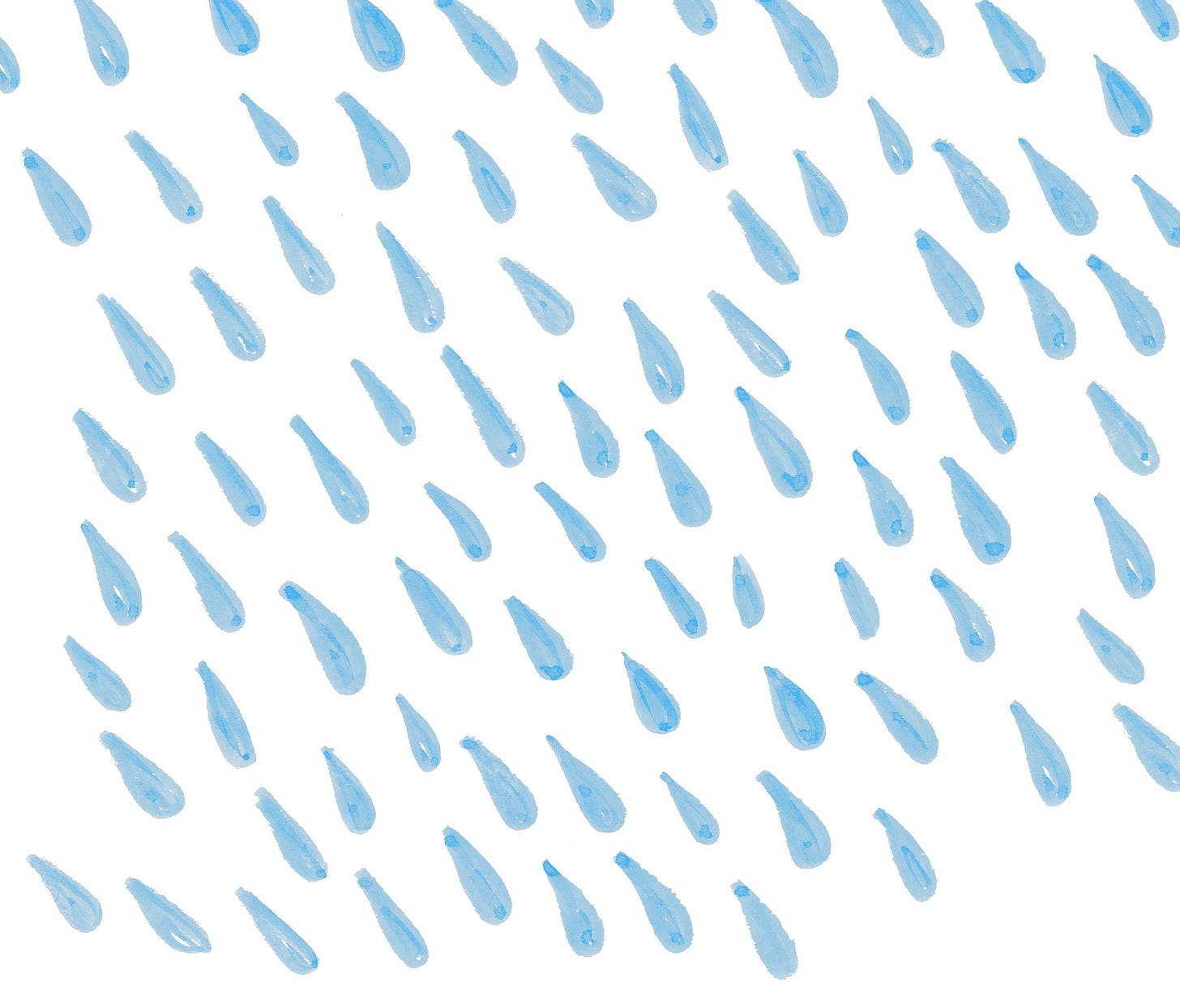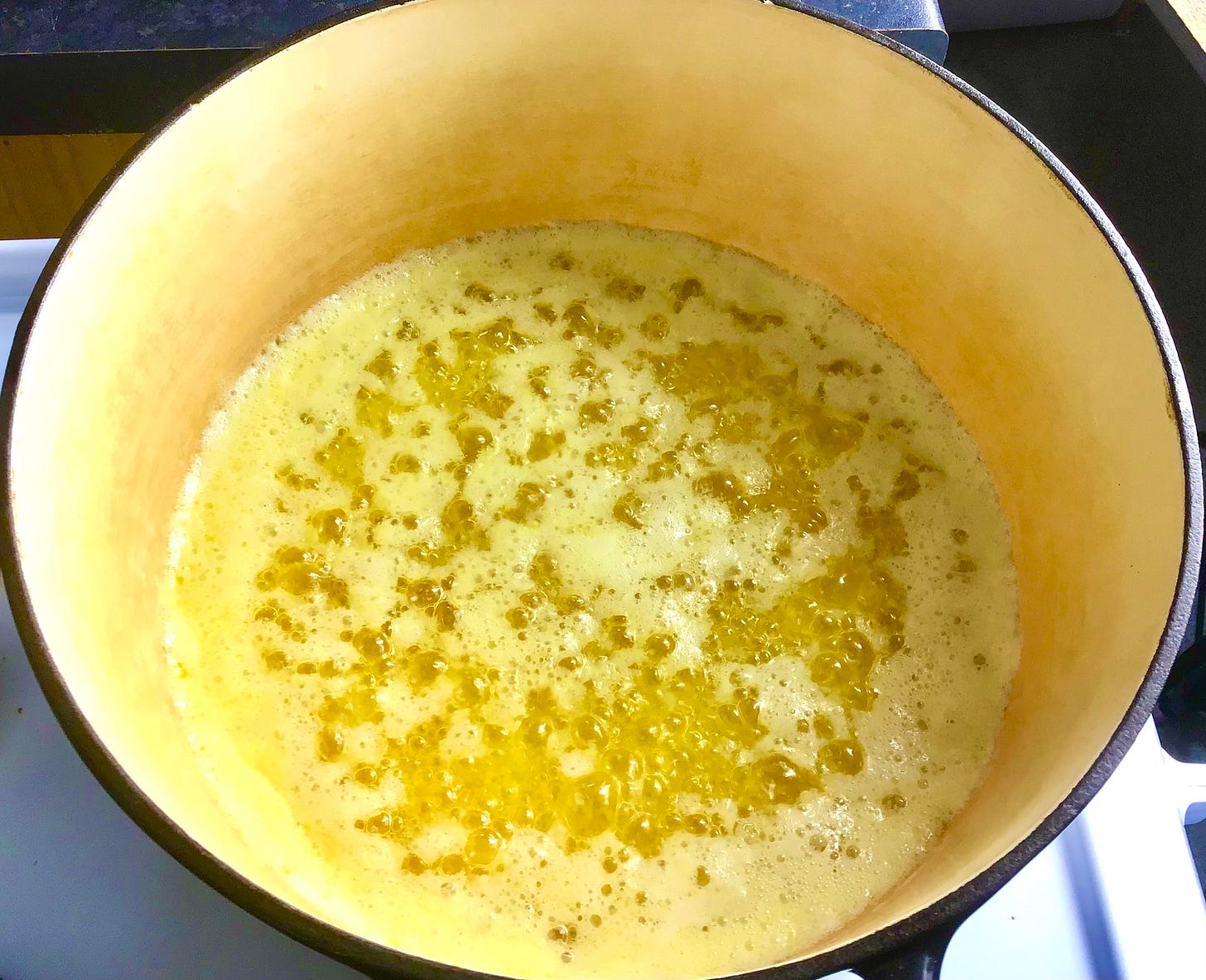Beginnings, weather & the Ayurvedic spring cleanse
How a change of food led to a change of perception.
Photo by Myriams-Fotos
I am looking out of the window at that silvery charcoal sky which is enveloping the world outside, creating a mist of fine rain drops. I see two birds, and now three, four and five gliding up through the clouds, then swooping down. Now they are gone and the sky keeps me company.
I’m enjoying the rain on the roof opposite my sitting room window, painting red terracotta tiles shiny and rich. To my right, a tree bush I’m hoping my neighbour won’t cut back is waving at me, with shiny glistening leaves. This is a new beginning for me. I moved into my new home last summer, but for various reasons it is only now that I have a new beginning.
Opening one of my windows, I see birds flying in and out of the tree bush as they nestle into the inner branches and I, nestle into my ever so cosy day. I think I will make some ghee for a friend whose birthday it is on Tuesday. I’ll fill the jar with de-stoned medjool dates and then pour over liquid ghee, to which I will have added a little cardamon, cinnamon and saffron while it spluttered and simmered. This is an ancient Ayurvedic tonic that deeply nourishes the tissues. You could make a big jar of this tonic and store in a cool dry place for months, eating a date each day with surrounding ghee to nourish your tissues. They say it will keep you young and so it is the perfect gift for my friend, as she moves into her 70th year.
I’d love to hear about your cosy Sundays and I’m sure others would too, perhaps you will share the things that let you feel warm and peaceful in the comments.
Over here in the U.K. we think spring has arrived, but we’re not completely sure.
We have lots of conversations about the weather here because it’s so changeable, especially at this time of year. The sun is warm when we see it, but the wind is cold as the sun disappears behind cloud again. Sometimes we have months of cloud that continues through winter into spring, with little hopeful rays of sunshine that quickly disappear leaving us wet and damp again. Then, on a good day the sun comes out once more, but perhaps not for long as a sudden downpour of hail descends and, this can all take place in the space of ten minutes!
This is why knowing exactly when to carry out the Ayurvedic spring cleanse can be a challenge for us. I usually opt to do mine around the time the clocks go forward — last Saturday of March at midnight.
This year I began my spring cleanse a couple of weeks ago when the weather warmed up, and I’m currently moving through the final part — rejuvenation — feeling very peaceful and not minding that winter seems to have returned. The grey cloudy sky outside my window looks silvery charcoal. A sky blanket of cosy serenity cocooning me as I write this post, with a single bird gliding through.
Just before the cleanse the grey sky looked heavy, oppressing and I wanted to escape. This change in attitude is what the spring cleanse is all about. The Ayurvedic spring cleanse changes the way you feel by clearing out winter heaviness in your body and mind, so you can move forward into the year with a ‘spring’ in your step, even when it’s raining!
The Ayurvedic Spring Cleanse
There are three stages to the cleanse, the pre-cleanse, active-cleanse and post-cleanse. The length of time you spend on your cleanse can vary, depending upon your circumstances. A simple home cleanse could be 3 days pre-cleanse, 3-days active cleanse, 3-days post-cleanse for the reintroduction of other foods and 2-weeks of rejuvenation. Or you could do 7:7:7 and 2 months of rejuvenation. The important thing is to be able to rest during the active stage of the cleanse. And, if you are a vata type and start to feel weak and spaced out, cut the active stage short — of course this applies to anyone who does not feel well. And best not to do this cleanse when pregnant, breast feeding, or check with your doctor if you have a medical condition.
Each of my posts this week will focus on one of these stages, beginning today with the pre-cleanse which is where you get to clean up your diet. Hoorah! I hear you cry! Or perhaps just cry because it’s time to cut out all processed food and sugars, along with chocolate, alcohol and recreational drugs. But, I promise you are going to feel so much better for it. My Instagram feed has lots of simple recipes that you could make during this first stage — @yourpeacefulbelly.
As well as eating simply, if you can cut out caffeine that would be good. I know this can feel like a difficult thing to do due to withdrawal symptoms and so, if you prefer you could take little sips of green tea instead of coffee or other heavily caffeinated drinks, to take the edge off this.
You also need to cut out snacks and eat three meals a day, making lunch the largest. First thing each morning drink 1 teaspoon of ghee (flax oil if you are vegan or concerned about cholesterol) in a mug of hot water on an empty stomach, and wait 20 minutes before eating. Check with your doctor if you have health concerns or high cholesterol levels. The liquid ghee helps release fat soluble toxins from the cells, which can make their way back to the digestive tract, and from there they can be taken out of your body during the second ‘active’ stage.
Ghee
There is nothing I like better than making a jar of golden ghee. The kitchen becomes deeply peaceful as the butter simmers away on the cooker in a heavy-bottomed pan, spitting and sizzling as the moisture escapes. Foam rises to the surface and the milk solids fall to the bottom of the pan. Then the kitchen fills with the smell of caramel as I decant the golden liquid into glass jars through muslin. It doesn’t matter what time of year it is, whether the sky is full of sunshine or grey clouds, the deep warmth and peace that comes into my kitchen with ghee-making is always the same, a beautiful peaceful experience.
In India ghee represents purity and is celebrated as a shining light. It is a symbol of nourishment, healing, and everything auspicious. This beautiful golden unctuous treasure is used as a therapeutic food supplying the body with the finest of fuels, and as a supreme offering in religious rituals. In one of the Vedic myths, Prajapati the lord of creation created ghee by rubbing his hands together, which he then dipped over a flame to create his children. The ritual of pouring ghee into fire as an offering is still performed today and ghee lamps are lit to purify spaces for prayer.
Here is an extract from my book “Your Peaceful Belly” which has lots of research references.
“In Ayurveda, ghee is used as a nutritive and rejuvenating tonic, which increases vitality. I learned that ghee improves intelligence, strengthens the liver, kidneys and brain whilst helping to balance the digestive system. Ghee also lubricates your connective tissues and, in this way, supports flexibility. Ghee is the perfect remedy for leaky gut because it is pure butyrate and so heals the junctions between the epithelial cells of the intestinal lining. I drank one teaspoon of ghee in a mug of hot water each morning while I was healing my digestive issues.” : Taken from my book “Your Peaceful Belly”: 126
Making ghee
To make ghee you take unsalted organic butter (traditionally raw butter would have been made and used) and simmer it so that the water evaporates. As this takes place you will hear a spluttering. It’s important to do this on a gentle heat so that the milk solids which fall to the bottom of the pan don’t burn. Once the sound of spluttering stops continue to cook until there is the smell of popcorn. You are browning but not burning the milk solids on the bottom of the pan to caramelise them.
Finish by straining through muslin into glass jars, leaving the lid off until the ghee is cool otherwise moisture will be trapped in the jar and the ghee will spoil. You can keep ghee out of the fridge for many months, stored in a cool dry place.
Well, that’s the end of this Sunday’s post, if you enjoyed it a like will help me reach more people.











